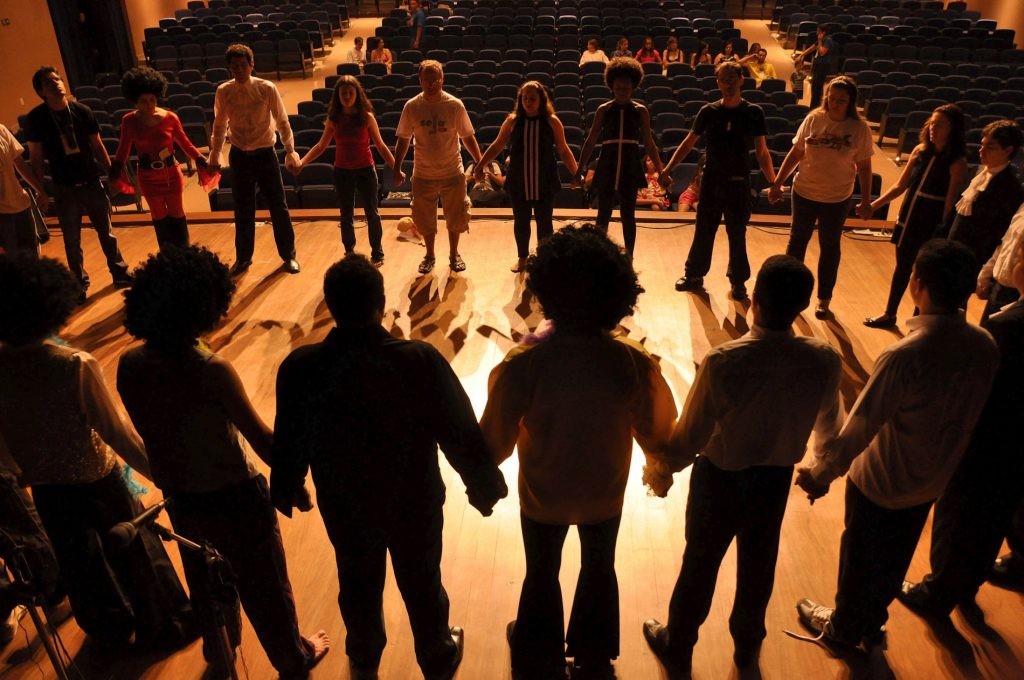
Impacting the community and spreading the love of the performing arts has always been a passion for ACT Studios. So we’ve created a learning center, located on Hillside Avenue and 182nd Street, where individuals can come to learn the techniques of acting, singing and dancing. This theatre program is open to all ages. If you’re interested, feel free to contact us for more information!
Types of Drama
The symbol of drama – the laughing and weeping masks – represent the two main types of drama, comedy and tragedy. Within those categories lie the many forms of drama that entertain people today. In modern theater, the lines between these types of drama are often quite blurred, with elements of comedy, drama and tragedy residing in the same play.
COMEDY: When we talk about comedy, we usually refer to plays that are light in tone, and that typically have happy endings. The intent of a comedic play is to make the audience laugh. In modern theater, there are many different styles of comedy, ranging from realistic stories, where the humor is derived from real-life situations, to outrageous slapstick humor.
TRAGEDY: Tragedy is one of the oldest forms of drama; however, its meaning has changed since the earliest days of staged plays. In ancient times, a tragedy was often an historical drama featuring the downfall of a great man. In modern theater, the definition is a bit looser. Tragedy usually involves serious subject matter and the death of one or more main characters. These plays rarely have a happy ending.
FARCE: Farce is a sub-category of comedy, characterized by greatly exaggerated characters and situations. Characters tend to be one-dimensional and often follow stereotypical behavior. Farces typically involve mistaken identities, lots of physical comedy and outrageous plot twists.
MELODRAMA: Melodrama is another type of exaggerated drama. As in farce, the characters tend to be simplified and one-dimensional. The formulaic storyline of the classic melodrama typically involves a villain a heroine, and a hero who must rescue the heroine from the villain.
MUSICAL: In musical theater, the story is told not only through dialogue and acting but also through music and dance. Musicals are often comedic, although many do involve serious subject matter. Most involve a large cast and lavish sets and costumes.
PANTOMIME: In pantomime, the drama is executed without words, with action, usually through narration.